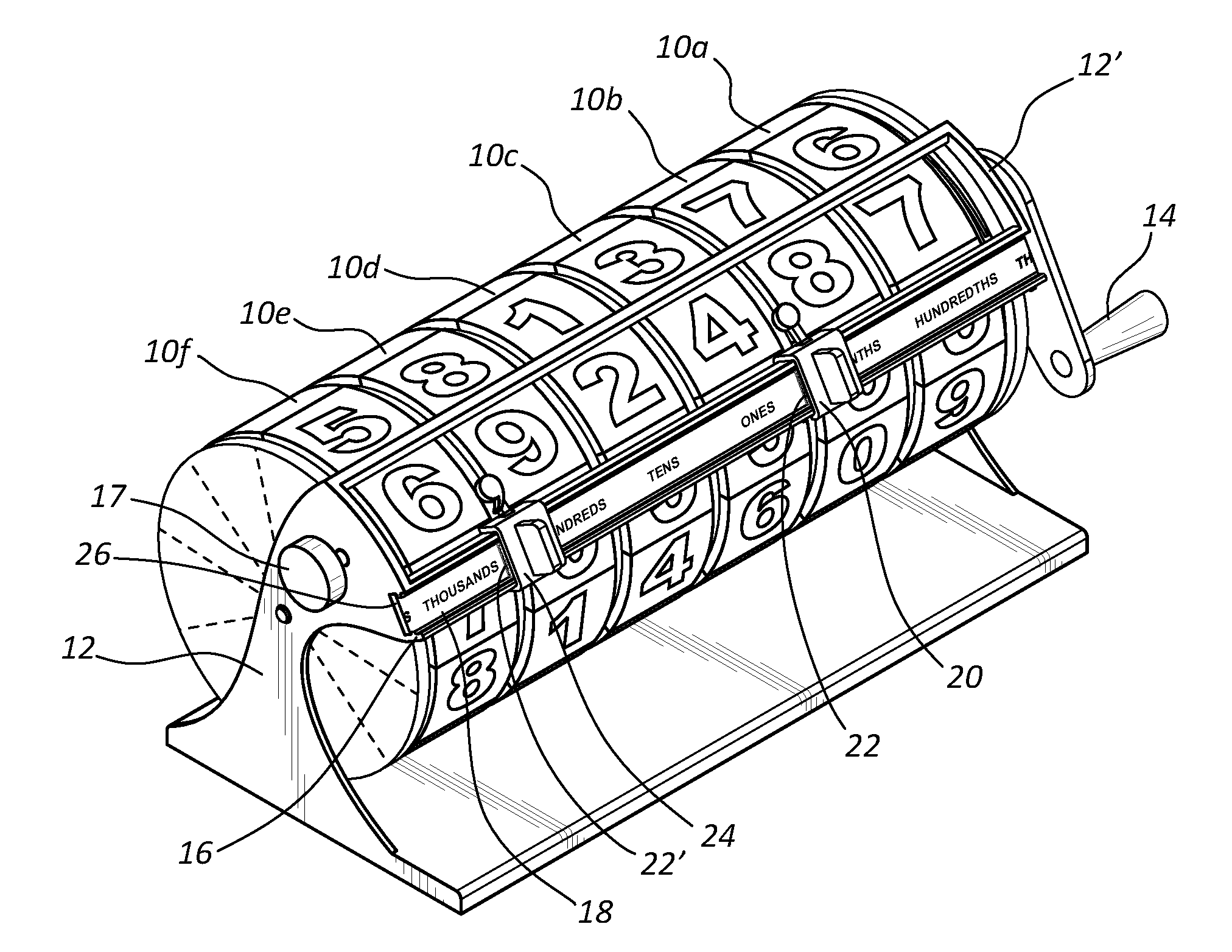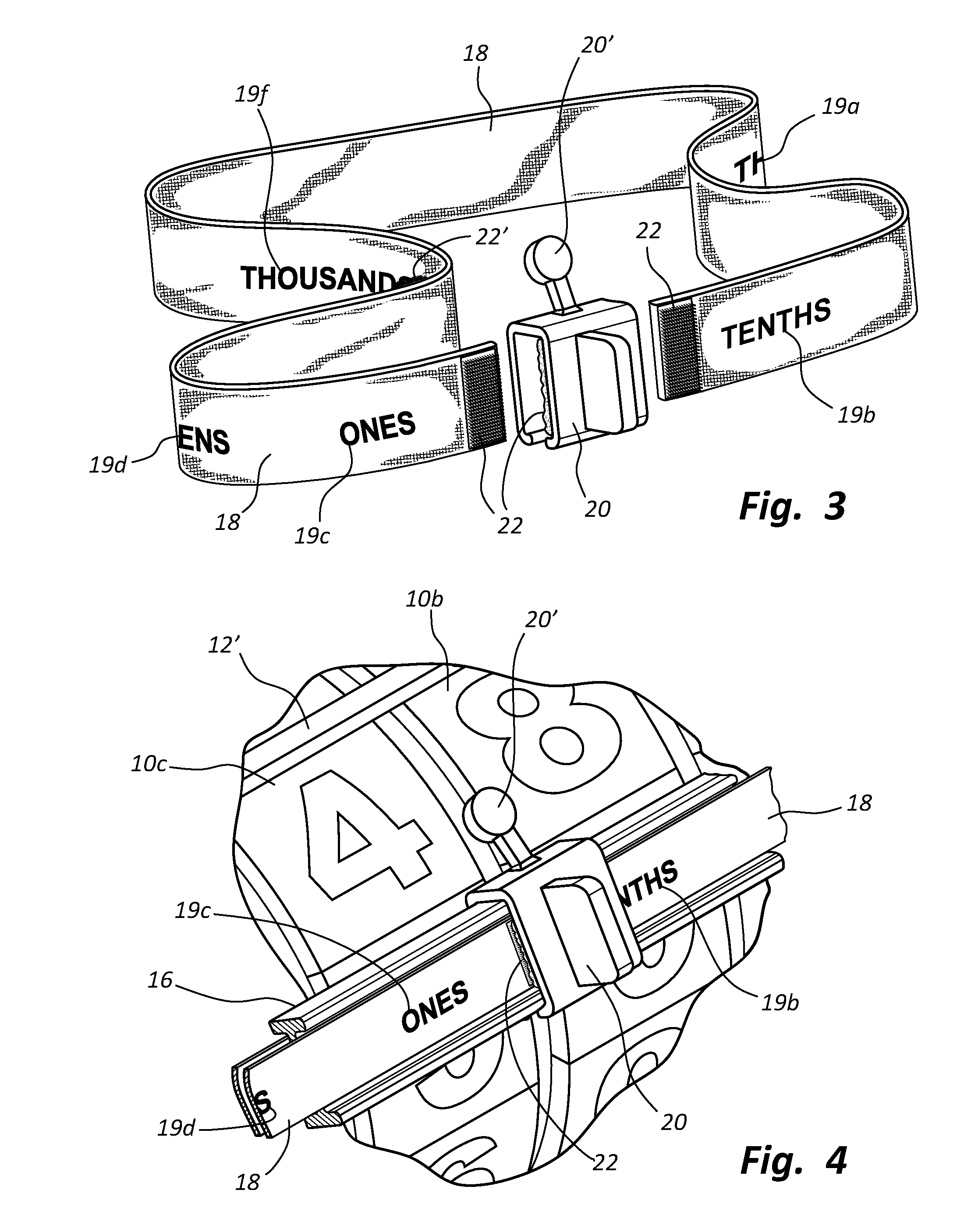Counting Wheel Odometer with Movable Decimal Point
a technology of odometer and decimal point, which is applied in the field of educational devices, can solve the problems of reducing the potential of specific learning modes, and reducing so as to reduce manufacturing or assembly costs, improve the accuracy of notation, and improve the effect of notation accuracy
- Summary
- Abstract
- Description
- Claims
- Application Information
AI Technical Summary
Benefits of technology
Problems solved by technology
Method used
Image
Examples
Embodiment Construction
FIGS. 1-5—Preferred Embodiment
[0037]FIG. 1 shows a perspective view of my educational device. This device uses a conventional counting-wheel odometer. This style of odometer is a well-known article of trade. A plurality of counting wheels (10a-10f) are rotatably mounted on a shaft. Each counting wheel is sequentially and identically numbered with digits 0-9. The counting wheels are interconnected by conventional motion transfer components (not shown) which are located between the wheels. These transfer components are designed and assembled in a fashion to assist and govern sequential numeric display. The counting wheels range in order from the rightmost, or lowest order counting wheel (10a) to the leftmost, or highest order counting wheel (10f). The odometer assembly is supported by a frame (12). A hand crank (14) is connected to the motion transfer components. In this embodiment, translucent counting wheels are preferred. This allows students to observe the mechanical operation of ...
PUM
 Login to View More
Login to View More Abstract
Description
Claims
Application Information
 Login to View More
Login to View More - R&D
- Intellectual Property
- Life Sciences
- Materials
- Tech Scout
- Unparalleled Data Quality
- Higher Quality Content
- 60% Fewer Hallucinations
Browse by: Latest US Patents, China's latest patents, Technical Efficacy Thesaurus, Application Domain, Technology Topic, Popular Technical Reports.
© 2025 PatSnap. All rights reserved.Legal|Privacy policy|Modern Slavery Act Transparency Statement|Sitemap|About US| Contact US: help@patsnap.com



